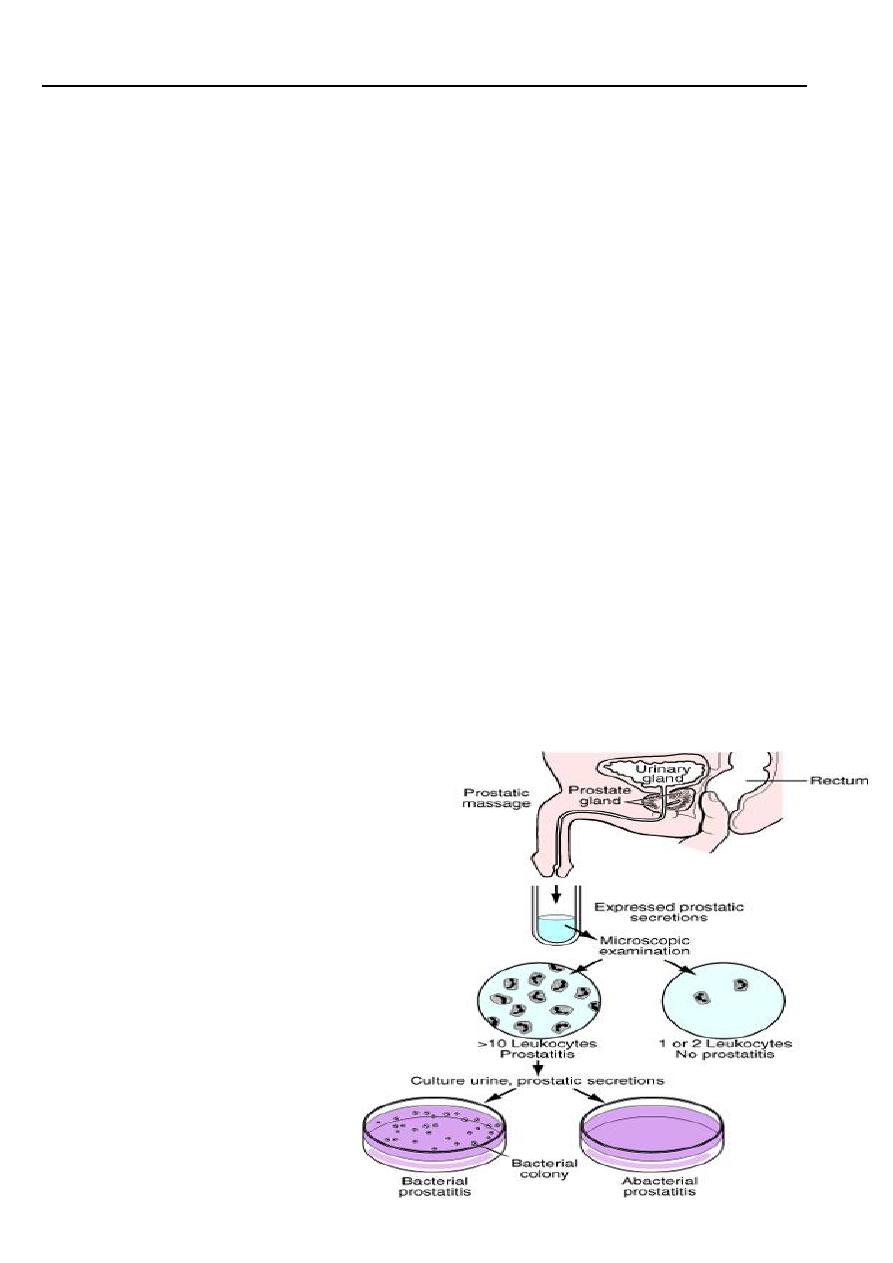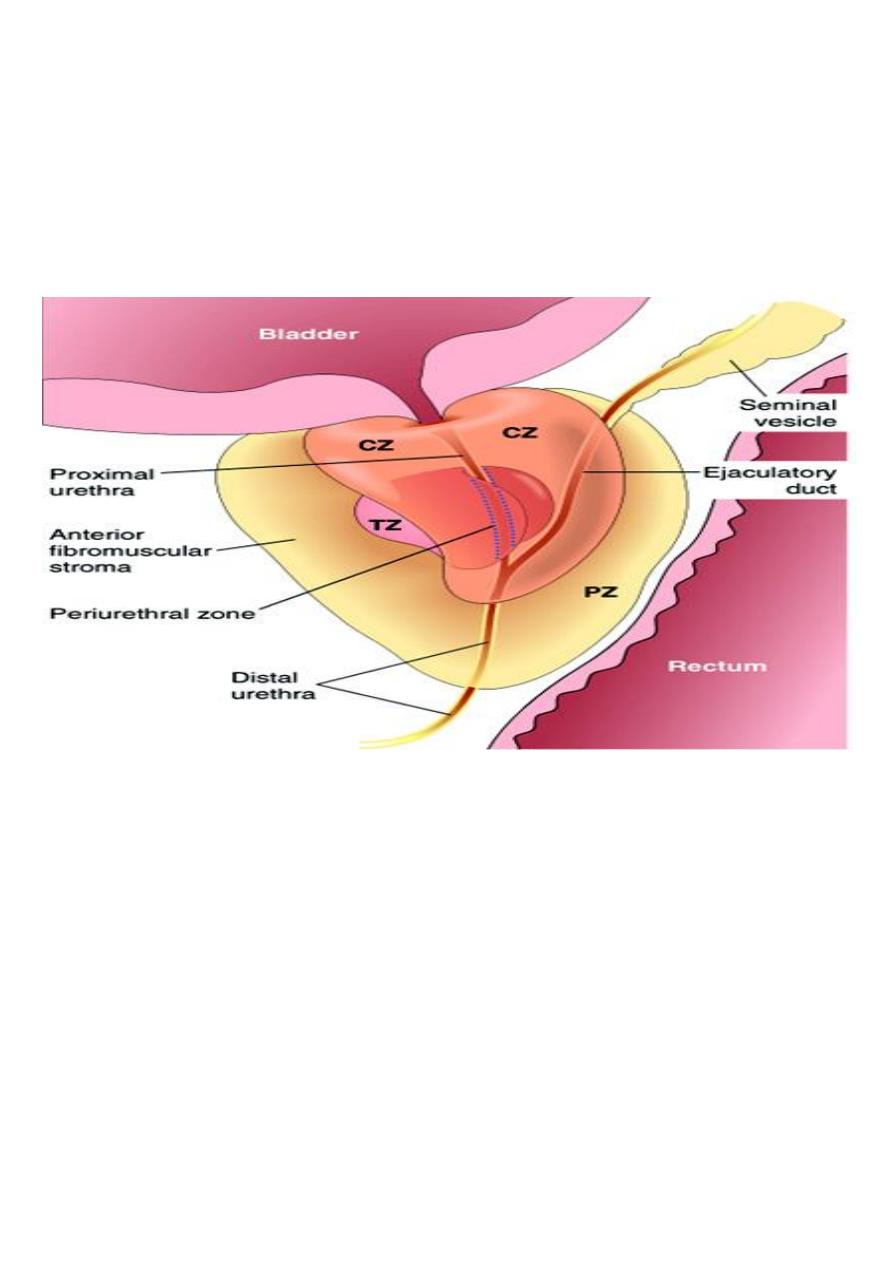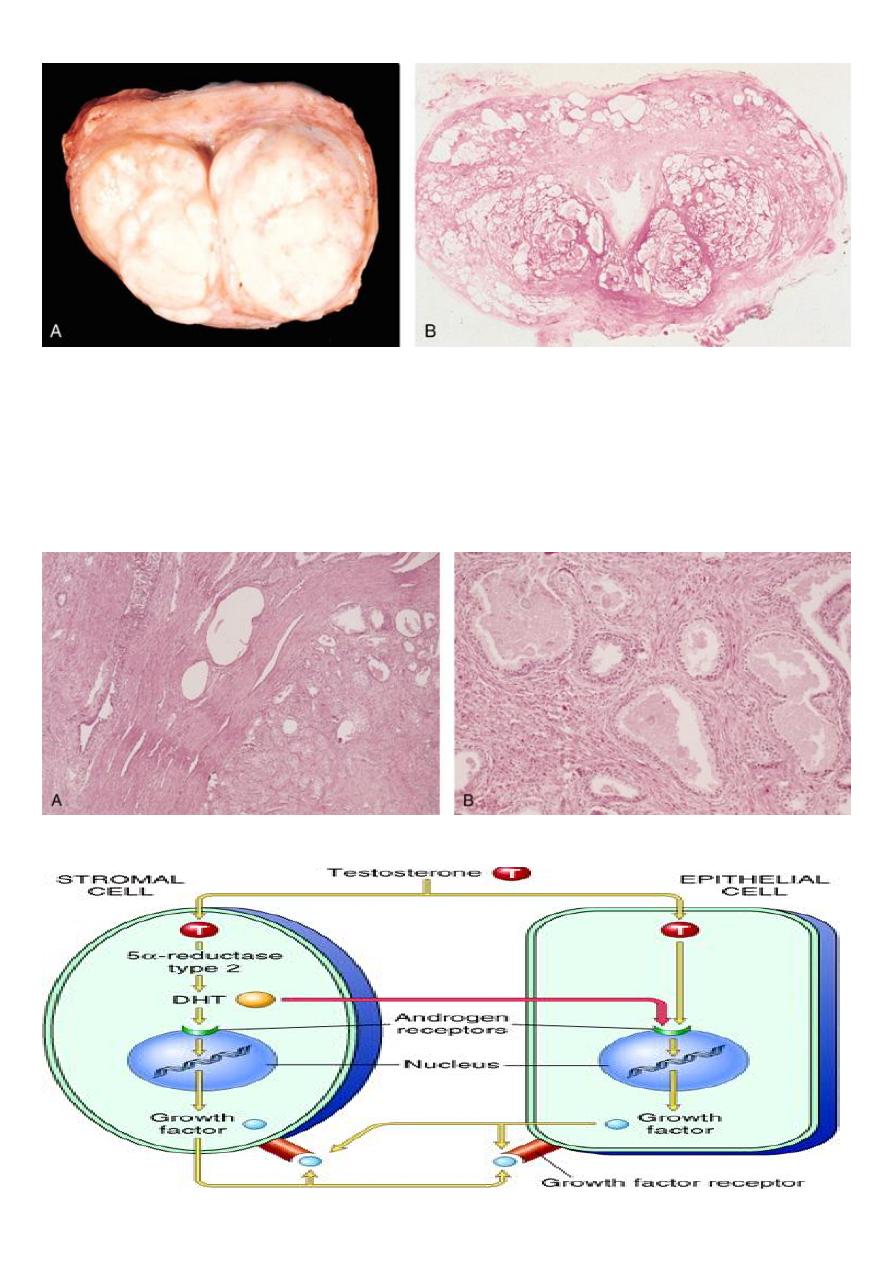
Prostate Dr. Hameed pathology
PROSTATE
•
Prostatitis :
inflammation of the prostate may be acute or chronic, manifested by
dysuria, urinary frequency, and lower back pain. The diagnosis is depended on clinical
feature ,microscopic exam and culture of urine specimen that is obtained before and
after prostatic massage .
•
Acute prostatitis
-
:
most commonly associated with LUTI such urethrocysitis caused by
E. coli and other G-ve organisms. These organisms may reach the prostate by either
direct extension or by vascular channels from more distant sites .
•
Microscopically
characterized by acute neutrophilic infiltration with stromal congestion
and edema in severe infection there is destruction of the glandular epithelium with
microabscesss formation .
•
Grossly
: visible abscesses uncommon but they may develop in extensive tissue
destruction as in patient with DM .
•
Chronic prostatitis
:Chronic bacterial prostatitis follows recurrent episodes of acute
prostatitis .Chronic
a
bacterial prostatitis: there is an increase number of leukocytes in
prostatic secretion but negative finding on bacteriological culture. It caused by the
nonbacterial agents such as Chlamydia trachomatis .
•
Microscopically
:in addition to the acute inflammatory changes there is lymphoid
infiltration with more glandular tissue destruction and fibroblast proliferation .
•
Chronic granulomatous prostatitis
:associated with systemic inflammatory processes
such disseminates Tb, fungal infection, sarcoidosis, Wegener granulomatosis .
Prostatitis
• Acute bacterial
• Ascending
• E .coli
• Chronic bacterial
• Low back pain
• Dysuria
• Suprapubic pain
• Common bugs
• ‘Abacterial’
• Chlamydia

Benign prostatic hyperplasia (BPH) :
-
Prostatic parenchyma consists of glandular and stromal elements and it’s divided into
specific regions which are the peripheral, central, transitional, periurethral zones. Most
hyperplastic lesions arise in the inner transitional and central zones while most
carcinomas
(70-80%)
arise in the peripheral zones .
Prostatic Disease
Nodular hyperplasia of the prostate characterized by proliferation of both epithelial and
stromal elements with enlargement of the gland and urinary obstruction may occur. The
patient manifested by hesitancy (difficulty in starting the stream of urine) with intermittent
interruption of urine stream while voiding and some times complete urinary obstruction may
occur with bladder distension and hydronephrosis. BPH developed in significant number of
men by the age 40 and the frequency rises progressively with age reaching 90% by the eighth
decade .
Benign Prostatic Hyperplasia
• Very common
• Androgen mediated growth (DHT) .
• Central zone proliferates
• Stroma
&
• Glands
• Minimal if any increased cancer risk

• Nodular growth pattern
• Some chronic inflammation
• Glands always have a double layer of epithelium
• Columnar
&
• Reserve layer
Benign Prostatic Hyperplasia

The cause of the BPH remains incompletely understood but they found that androgens and
estrogens play a synergistic role in its development
Because the androgen play an important role in the pathogenesis of this disease; an intact
testis is necessary for the development of nodular hyperplasia and that’s why nodular
hyperplasia dose not occur in castrated males .Dihydrotestosterone (DHT) is an androgen
derived from the testosterone through the action 5α-reductase but its metabolite 3α-
androstanediol appear to be a major hormonal stimulus for proliferation of both epithelial and
stromal elements in patient with BPH, and that’s why 5α-reductase inhibitors used in
treatment of symptomatic cases .
Paradoxically BPH is manifested in old age men when the level of the testosterone is either
stable or declined. They also found that; the administration of testosterone dose not
exacerbated the preexisting nodular hyperplasia. From these observations they suggest that
there is an other factor that playing a role in the pathogenesis of the disease rather than
androgens and they found that the age related increases in the estrogen levels may increase
the expression of DHT receptors on the prostatic parenchymal cells and so enhancing the
effect of the DHT .
Pathology
:
-
nodular hyperplasia arises most commonly in the inner (central and transitional)
region. The affected prostate is enlarged and the developing nodules compress the centrally
located urethral lumen and the normal peripheral prostatic tissue which converted to an
attenuated rim of tissue beneath the prostatic capsule. The cut surface contains multiple well
circumscribed nodules which bulge from the cut surface. The nodules may have a solid
appearance or may contain cystic spaces due to focal hemorrhage and infarction .
Microscopically
:
-
the hyperplastic nodules composed of varying proportions of proliferating
glandular elements and fibromuscular stroma .
The hyperplastic glands are lined by tall columnar epithelium based on flattened basal cells;
papillary projections in some glands due to crowding of the proliferating epithelium .The
glandular lumen often contains inspissated ,protienaceous secretory material termed
corpora
amylacea
.The glands are surrounded by proliferating stromal elements (stroma is always
present between the hyperplastic glands in contrast to carcinoma).
" A simple act of kindness always sparks another"
